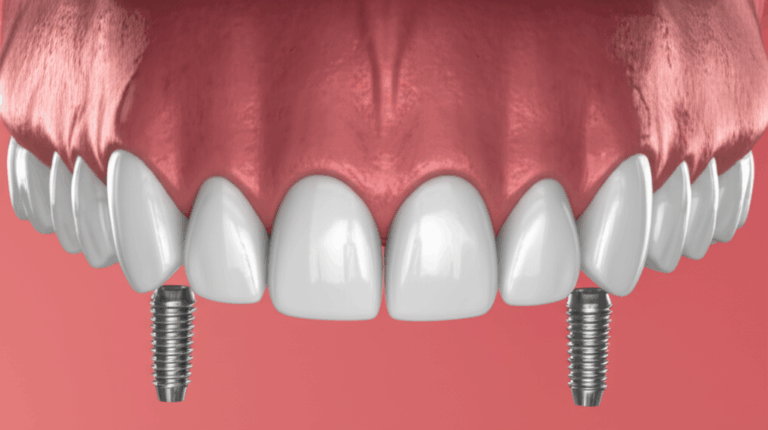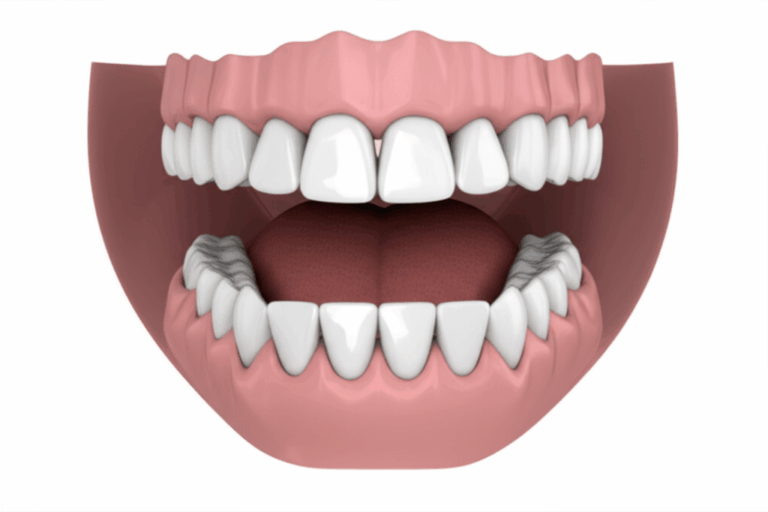
Does PPO Dental Insurance Cover Dental Implants? A Simple Guide to Understanding Your Coverage
That big question—Does my PPO dental insurance pay for implants?—has probably been on your mind if you’ve lost a tooth or know someone who spent a lot on repairing their smile. If you feel lost or annoyed by all the insurance words, exceptions, and limits, take a deep breath. You’re not the only one. Actually, it’s one of the most common questions people ask their dentist—and for a good reason!
Dental implants are a big step for your health, confidence, and eating the food you like. But the cost? It can look scary if you don’t know what your insurance will help with. In this guide, I’ll show you why coverage is so different from plan to plan, what you might really get, and how to check your own benefits. You’ll have what you need—not just to ask better questions, but to feel sure making choices about your dental health.
In This Article
- 1. PPO Dental Insurance & Dental Implants: What’s Really Going On?
- 2. Common Coverage Scenarios: What Gets Paid, What Doesn’t?
- 3. Key Factors That Influence Implant Coverage
- 4. How to Confirm Your Implant Coverage—Step by Step
- 5. Managing Out-of-Pocket Costs for Dental Implants
- 6. Alternatives to Implants (And What Insurance Covers)
- 7. The Healthy Takeaway: Summary & Next Steps
1. PPO Dental Insurance & Dental Implants: What’s Really Going On?
Let’s start at the beginning. Maybe you’re asking, “Why is dental implant coverage so all over the place?” One plan pays for some of it, another gives you nothing, and a third has a long list of things it won’t pay for.
What Is a PPO Dental Plan?
A PPO (Preferred Provider Organization) dental plan lets you choose almost any dentist or specialist you want. You save the most if you stick with dentists in your network, but you can go outside—just know you’ll pay more. Compared to HMOs (that make you use only certain dentists), PPOs give you more choice.
Why Does Implant Coverage Change So Much?
Dental insurance isn’t quite like health insurance. Instead of paying for big emergencies, most dental plans help with regular check-ups and “medium” dental work—think cleanings, fillings, and maybe a crown. When you talk about dental implants, things get unclear.
Here’s Why:
- Implants are usually called “major” dental work.
- Some plans only help with simpler things like fillings or pulling a tooth.
- Some insurance companies say implants are just for looks (even if you just want to eat food easily).
- If you lost a tooth because of an accident or mouth disease, you might have a better chance, but it comes down to your plan.
- The fine print may say, “No coverage for dental implants.”
- Others only pay for the top part (crown), not the screw (implant post) that goes into your jaw.
In short? PPO dental plans are all different. If your friend got help paying for their implant, it doesn’t mean you will.
Think of dental insurance like a buffet—some foods are included, others cost extra, and some are not there at all!
2. Common Coverage Scenarios: What Gets Paid, What Doesn’t?
Here’s what you really want to know:
Does PPO dental insurance pay for implants?
Quick Answer: Sometimes, but not usually for the full amount. More plans are starting to pay for them, but most plans only help with part of the work—or pay for nothing. Here’s how it breaks down:
A. Some Coverage (Most Common)
See it as a job in three parts:
- Implant Post (the “root”): Most plans don’t cover this or pay only a little, since it’s a bigger procedure.
- Abutment (the connector): May be covered at 50-80% if they call it a replacement piece.
- Crown (the tooth you see): Usually seen as “major” work—many plans pay for it at higher rates.
Example: Your insurance pays 50% of big dental jobs, with a $1,500 yearly maximum. You need a $4,000 implant (for the post, abutment, and crown).
- The plan might only help with the crown and abutment, but you pay the full price for the implant post.
B. Full Coverage (Not Common)
A few PPO plans—usually the expensive ones—might list implants as covered, with higher yearly limits and longer waiting times. These plans cost more each month.
C. No Coverage (Very Common)
Many plans simply say, “implants not covered.” That means:
- Bridges, partials, or dentures are covered. Implants? You pay for the whole thing.
Typical Coverage Scenarios Table
| Service Part | % of PPO Plans That Pay | Typical % Insurance Pays | Notes |
|---|---|---|---|
| Implant Post Placement | ~40-60% (somewhat/limited) | 0-20% (or not at all) | Often called cosmetic or major, sometimes not covered at all |
| Abutment & Crown | 50-80% | 50-80% | Covered as replacement or repair, kind of like crown coverage |
| Bone Graft/Sinus Lift | Not Common | 0-50% | Usually only if needed for health, sometimes covered only a bit |
3. Key Factors That Influence Implant Coverage
Even if your plan does pay for implants, there’s more to think about. Here are the biggest things that decide if you get help or not.
1. Yearly Maximums
This is the most money your plan will pay each year for all dental work—often $1,000 to $2,000 in the U.S. Dental implants can cost more, so you pay extra above this limit.
Tip: If your implant work happens over two years, you might use the yearly limit twice, but you have to plan this out with your dentist.
2. Deductibles
This is what you pay first, before insurance pays anything. Usually $50-$100 per person.
Example: If your deductible is $100, and your implant crown is $1,500, insurance pays after you pay the first $100.
3. Co-Insurance
This means you and your insurance both pay, once the deductible is met.
- For big dental work, 50% co-insurance is common.
So if the plan pays for the work, you may still pay half (or more) after the deductible—and any cost over the yearly max.
4. Waiting Periods
Most plans make you wait 6-12 months before they will pay for any big dental work.
So, you can’t just sign up and get $4,000 for an implant right away.
5. Pre-Authorization (Pre-Approval)
This is like getting a “yes” in writing. Always, always do this for expensive things like implants. Your dentist sends in a plan, and your insurance sends back what is and isn’t covered.
If you skip this, you may face a big bill you didn’t expect.
6. Proof You Need It for Health Reasons
If you lost teeth after an accident or because of disease, your dentist can write this up for you. In rare cases, your medical insurance might pay for part of the surgery. Still, working between dental and medical insurance is hard, and you need good proof.
7. Other Rules
- Age limits: Some insurance only pays for implants for grown-ups.
- Pre-existing conditions: If you lost the tooth before getting insurance, you probably can’t get coverage.
- How often you can get the work: Some plans limit how often you can have a big procedure done to the same tooth or area.
4. How to Confirm Your Implant Coverage—Step by Step
Want to save yourself a headache and money issues? Here’s what to do:
Step 1: Check Your Insurance Booklet
Grab your insurance info (they send it when you sign up). Look for:
- “Major Restorative Services”
- “Plan Exclusions” (search for “implant” or “implant-supported”)
- “Yearly Maximums,” “Waiting Periods,” “Deductibles”
If it clearly says dental implants are covered under big dental jobs (codes like D6010), that’s good. If not, coverage might be small or not there.
Step 2: Call Your Insurance
Use the phone number on your card.
Ask these questions:
- Do you pay for dental implant posts?
- What about the abutment and crown?
- Will you help with bone grafts, sinus lifts, or pulling teeth?
- Do I need your approval before I start? How long must I wait?
- What’s my yearly max? My deductible? My co-insurance?
Ask them to send you an answer in writing.
Step 3: Talk With Your Dentist or Surgeon
Get a clear, written plan for your treatment. Ask them to send it to your insurance for pre-approval. Your dentist can usually estimate what you’ll pay, based on how your plan works. Find out what codes they use for billing (like D6010 for the implant, D6057 for abutment).
Step 4: Know How Dental and Medical Insurance Might Work Together
In some rare cases (serious injury, birth problems, certain illnesses), medical insurance might help with surgery. Your dentist or surgeon will know if you qualify, but don’t count on it.
5. Managing Out-of-Pocket Costs for Dental Implants
Even with insurance, you may still pay a lot for dental implants. But don’t worry—there are ways to help.
A. Get the Most from Your PPO
- Plan your treatment: If you need more than one implant or lots of work, doing it over two years may let you use the yearly maximum twice.
- Use FSA or HSA accounts: These let you use pre-tax money to pay for dental work, including implants. You still pay the bill, but you save some on taxes.
B. Payment Plans & Loans
- Some dental offices let you pay monthly, often with low or no interest.
- Companies like CareCredit can help spread out payments too.
C. Discount Dental Plans
A discount dental plan is not insurance. It just gives you lower prices with certain dentists. These can sometimes help fill in gaps if insurance won’t pay, especially for implants.
D. Dental Schools & Local Clinics
If money is really tight, check for dental schools nearby. Students (under an expert’s watch) often do implants for much less—sometimes half the price.
E. Medical Payment Credit Cards
Cards made for health care bills can help split payments up. But watch out—if you don’t pay the whole thing soon, interest charges can add up.
6. Alternatives to Implants (And What Insurance Covers)
Not sure if you want an implant or something else? Here’s a quick look at your options and what plans usually pay for.
A. Dental Bridges
- A bridge uses the healthy teeth next to your missing one to hold a fake tooth.
- Pros: Usually covered at 50%, costs less than an implant.
- Cons: Your nearby teeth will be filed down, and it may not last as long.
B. Dentures (Partial or Full)
- Dentures replace several or all missing teeth.
- Pros: Usually covered better by PPO plans. Made and fitted quickly.
- Cons: May not fit as well as implants and can need many fixes.
Coverage Comparison Table
| Treatment | Usual PPO Coverage % | Pros | Cons |
|---|---|---|---|
| Dental Implants | 0-50% (parts only) | Look, feel, and work like real teeth; save jawbone | High cost, rules and limits |
| Bridges | 50% (often) | Faster, less money up front | Files good teeth, may not last as long |
| Dentures | 50-80% (often) | Quick, usually covered well | Can slip, may need fixes or replacing |
7. The Healthy Takeaway: Summary & Next Steps
That was a lot, so here are the basics.
What to Remember:
- Coverage for implants by PPO dental insurance changes a lot. Your plan’s rules, how your dentist codes the visit, and sometimes if the tooth loss is needed for your health all matter.
- You’ll probably get some help with the crown and abutment, but not the post. Full coverage is rare.
- Yearly limits, co-insurance, deductibles, and waiting times all affect what you pay yourself.
- Double check your plan, call your insurance, and get their answer in writing before starting any work. This saves you from surprise bills.
- Check out all your options: FSA/HSA accounts, payment plans, dental schools, and discount plans can all help with costs.
- Bridges and dentures are often covered more than implants. If you can’t afford an implant, there are other choices.
Easy Next Steps:
Frequently Asked Questions (FAQs)
Q: How much does a dental implant cost with PPO insurance?
A: In the U.S., one implant (post, abutment, and crown) is $3,000 to $6,000 before insurance. PPO plans (usually pay 50%, after deductibles and yearly limits), so many people still pay $2,000-$4,000 themselves for one implant.
Q: What if my PPO plan says “No Coverage” for dental implants?
A: Ask about bridges or dentures—those are often covered. You can also look into supplemental dental insurance for implants or discount plans to help pay.
Q: What does “medically necessary” mean for dental implants?
A: If tooth loss comes from an accident or disease, and your dentist has proof, you might have a better chance of getting paid—each case is different.
Q: Can my medical insurance help with my dental implant?
A: Maybe—if you lost your tooth from an injury or certain health problems. It’s complicated, so check with your dentist and insurance.
Q: Where can I find more about dental solutions?
A: For a closer look at different implants, check out dental implant. To learn more about common dental problems and solutions, see dental problems. For lab options for implants, find more at implant dental laboratory.
Final Thoughts
Your smile is worth it, but you don’t have to figure out insurance alone—or take the first answer. Ask questions, do your homework, and look at all your choices. Whether you’re not sure about implants or ready to get one, understanding the basics helps you decide better.
Remember—it’s always smart to get answers before making a big health decision. Here’s to your confidence, your health, and a happy smile!
References:
- American Dental Association (ADA): www.ada.org
- Delta Dental, Cigna, Aetna: Policy and provider guides
This article is general info and is not medical or insurance advice. For your own plan, ask your dentist and insurance company directly.








